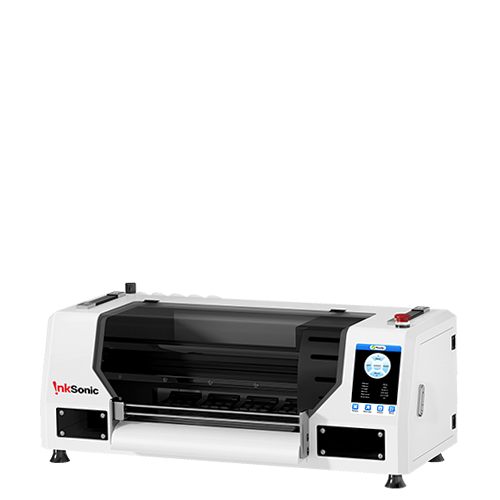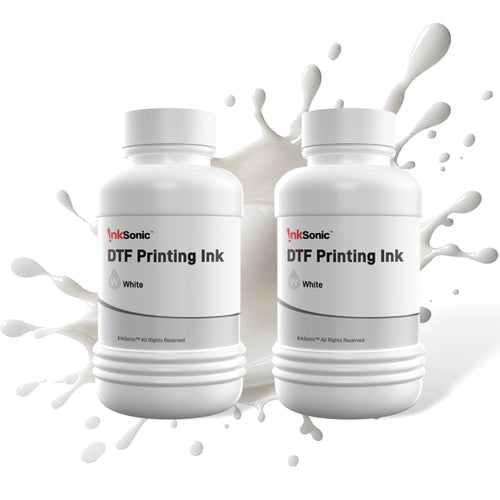She never finished college. She had no formal training in design. But Jade found her voice—and built a following—through the prints she wore on her back. What began as emotional artwork in the quiet of a rented room grew into a small, intentional brand founded upon self-expression. From doing odd jobs to investing in her own DTF printer, Jade's journey is one of perseverance, resourcefulness, and ownership—testament to the fact that you don't need a degree to build something meaningful, and wearable, from the heart.
Here’s how she turned a personal outlet into a growing creative business—one shirt at a time.
The Way It All Started
I was browsing my phone one day and came across a shirt in the comments. One of the comments said it looked like the shirt was saying my words. One sentence of the comment knocked me out so much.
I never studied design, but I've always had an ear for expression. I was overflowing with too many emotions; I needed someplace to let them out. At night, in the tiny rental room I occupied, I started drawing—just for me. I covered my walls with those drawings. And then one day, I thought: What if I wear them?
I found a small printing business online and asked that my designs be printed. It took forever, with mistakes here and there. But when I received my first printed t-shirt, it was exactly as I had pictured it in my head. That instant of seeing an idea realized had me completely hooked.
But life was not easy. At that time, I was not yet finished with college. I was on a break from school. And yes, my student loan was sitting in my bank account. Studying in the United States opens doors, but it also weighs you down. It gives you opportunities, but it brings a lot of pressure.
At one point, I totally ceased to create. I was just getting by at this point—doing odd jobs, trudging through the days. I had nowhere to put my feelings. I felt stagnant.
From Lost To Finding My Way
One day, I had an epiphany: If I kept existing only to pay debt, I'd never really get to do what I actually wanted to.
And I started taking part-time work to cover basic expenses. In the evenings, I kept designing. Slowly, I began selling clothes with my design. There were some initial orders from friends—someone launching a new café wanted me to design branded aprons, someone else needed themed tees for an event on campus. I obliged everything.
Before sending out each order, I double-checked every detail myself, repeatedly. Once, the colors were all wrong, so I reprinted the whole batch. Nobody noticed—but I did.
I'm not the sort who does business plans. But I did know this: I didn't want to hurry. I didn't want to produce "fast" fashion.
I wanted to make clothes people would wear over and over—things that were real, authentic, and a part of one's life.
When I started creating small-batch, unique prints, some people grumbled about the price being too high. But other people grumbled, "I'll wear this shirt for years." That kind of criticism made everything worth it.

All Me, All In
First, I used the "outsource model": I made them, then outsourced to have them printed on shirts for me. It was going fantastically in the beginning—low investment, low pressure.
But sooner or later, the problems mounted—delays, color mismatch, shipping. Most of all, I was not entirely in control of the quality.
My designs are intimate. Every element has meaning to me. Outsourcing simply didn't communicate the emotional tone I wanted in the final product.
So I worked, saved my funds, and gradually repaid my loan. When I eventually had enough saved, I bought my own printer.
DTG or DTF?
I researched like a ton the difference between DTG and DTF printing. DTG's got super fine detail, but it's picky with fabrics, especially dark colors and stuff. And my work's a lot about having to work with different types of fabric, so DTG just wasn't the option.
DTF, though, is capable of printing on any material. The prints are rich, dark, and the process is suitable for small and large orders. For me, with my versatile design and small quantity needs, DTF was perfect.
The Night Everything Changed
I’ll never forget the night everything changed. A local musician I followed—someone I really admired—posted a casual reel on Instagram wearing one of my shirts. No tag, no promo, just him in a quiet studio, strumming a guitar, and there it was: my design, front and center. I had gifted it to him weeks earlier, not expecting anything.
Within hours, my phone started lighting up.
DMs. Mentions. Order notifications. I thought it was a glitch at first.
By midnight, I had over 80 orders —more than I’d gotten in the past two months combined. My heart was racing. I called my best friend, screamed into the phone, and then sat down on the floor and started packing, one by one.
I didn’t have fancy packaging or a label printer then. I wrote every thank-you note by hand, taped each parcel with washi tape I had lying around, and worked until 3 a.m. fueled by nothing but adrenaline and instant ramen.
That night didn’t make me famous. But it made me believe, for the first time, that this could really work.
Grace Under Pressure
In the beginning, every mistake felt like a disaster. If a print came out crooked, or the colors didn’t look the way they did on screen, I’d freeze. I used to think, Maybe I’m not cut out for this. I’d waste hours trying to fix one shirt, or worse—start over completely, exhausted and second-guessing everything.
Now, I handle it differently.
When something goes wrong, I don’t spiral. I breathe, check the basics: Is the film straight? Did I use the right pressure? Maybe the fabric needed pre-pressing longer. I’ve learned that not every mishap is a failure—sometimes it’s just a skipped step, or the weather being too humid, or a setting I forgot to change.
I know my tools now. I know how my inks behave, which films are more forgiving, and when to walk away for five minutes instead of forcing it. I’ve set up little systems to keep things moving—labels, folders, notes-to-self. It’s not perfect, but it gives me space to create without fear.
And that’s the biggest difference: I no longer create from fear.
I create knowing that even if something goes off-track, I can fix it. That confidence didn’t come all at once—but I earned it, print by print.
How It's Going These Days
Now, I still work from home, processing orders, resizing layouts, and printing out all the materials myself. I don't yet have an assistant, and I'm still learning new tricks, but honestly? I don't believe that being "just one person" is a weakness.
This whole experience has also taught me that perseverance actually does pay off. People do pay attention.
I don't know if I would call myself a founder or designer. What I do know is that each and every piece I create is thought out, intentional, and something I'd be proud for someone to wear.

Dreams, Still Unfolding
I don’t need a giant studio or a flashy office. What I dream of is something small but full of soul.
One day, I’d love to open a little space— half gallery, half print studio , nestled on a quiet street where the windows fog up in winter and the light spills in just right during golden hour. There’d be racks of my designs, not crammed together but thoughtfully spaced, like pieces in a story. The walls would feature sketches, experiments, even the ones that didn’t quite work—because that’s part of the process too.
I imagine people walking in—not just to buy something, but to feel something . Maybe they’ll sit with me at a long wooden table, talk about their ideas, and we’ll sketch something together. Maybe they’ll leave with a one-of-one piece made just for them. Maybe they’ll come back again, just to talk.
I want it to be a place where creativity isn’t rushed. Where clothes aren’t just bought—they’re understood.
It might take me a while to get there. But I’m building it, piece by piece, with every print I make today.
Sincere words from Jade
You don’t need to have it all figured out to start. I didn’t. I just had too many feelings, a few rough sketches, and the courage to try. I made mistakes. I paused. I almost gave up. But I kept making—because creating helped me feel like myself again.
If you’re sitting there wondering if what you have is 'enough'—your talent, your tools, your time—I promise you, it is. Start with what you’ve got. Let it be imperfect. Let it be yours.



































